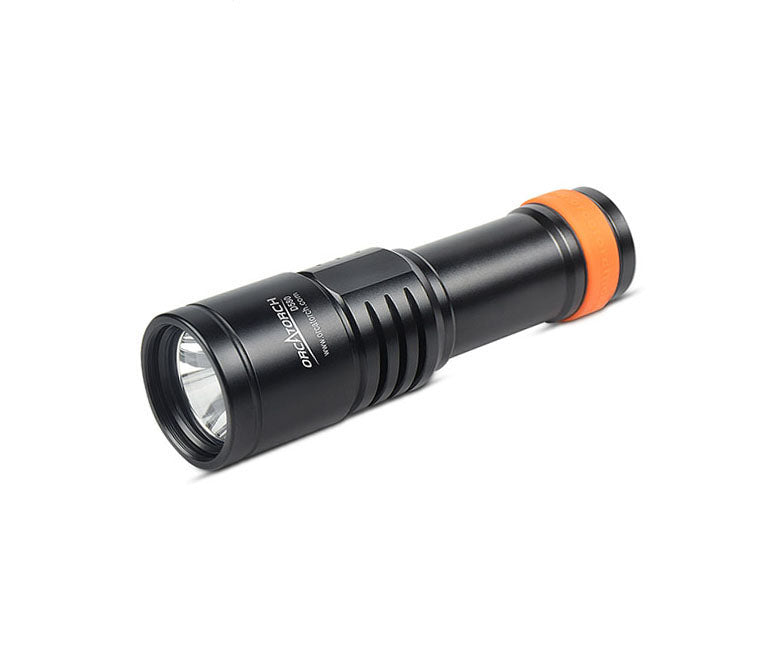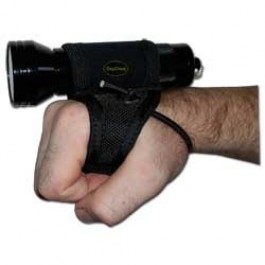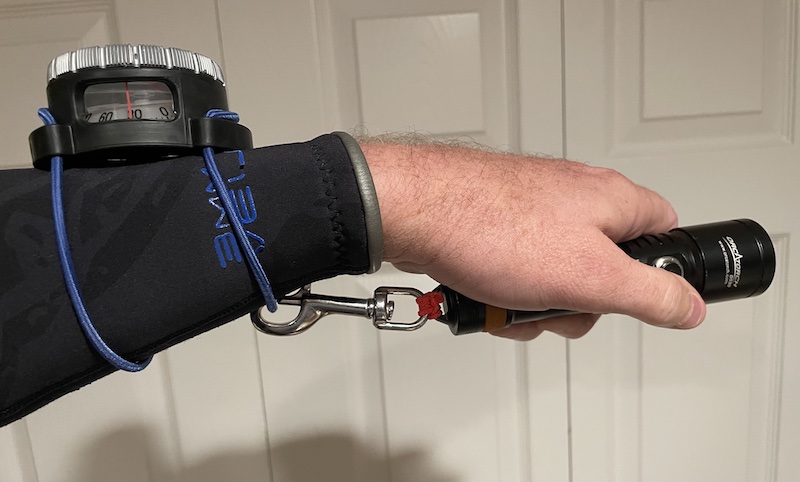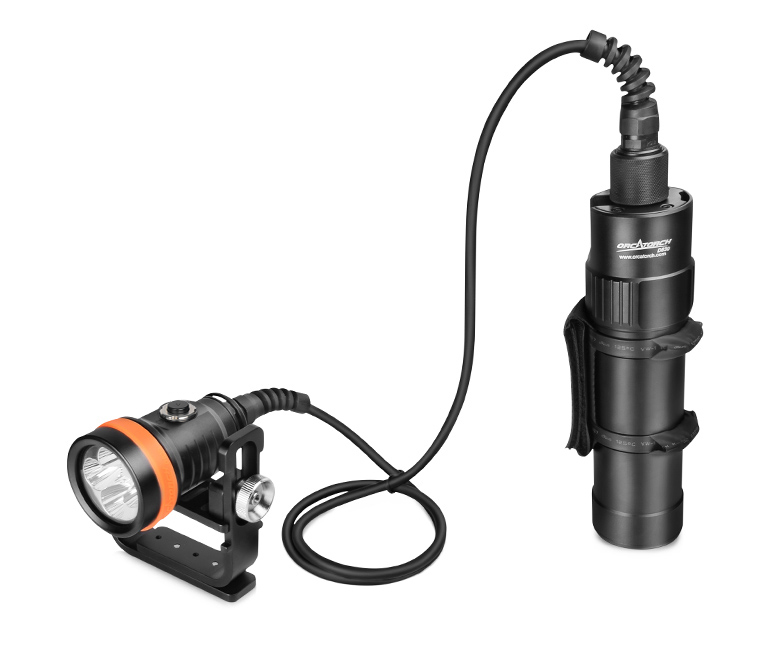
Primary vs Secondary
Generally speaking, divers will have one "big" light and one "smaller" light and they are called "Primary" and "Secondary". Technically, they can be exactly the same light if you wish, but often divers will use a more expensive "Primary" light and then a smaller or cheaper dive light as a "backup". An example of this would be:OrcaTorch D720 : $350 (Primary)
OrcaTorch D710 : $130 (Primary or Backup)
OrcaTorch D580 : $40 (Backup)

Switch Types
There are all sorts of different switch types for turning the dive light on and off, however the industry has generally converged on two primary types: Screw-On and Push Button.The primary deciding factor for which one to choose is do you believe it is more important to be able to turn the light on/off with one hand (Push Button) or is it more important that the light not turn on accidentally (Screw-On).
If you want the best of both worlds...
- Primary is Push Botton ( OrcaTorch D720 or OrcaTorch D710)
- Secondary is Screw-On (OrcaTorch D580)
Lumens vs Lux vs Candela
This is a holy war argument topic regarding lights in the dive industry. Does it matter? At a certain point yes. For the average recreational diver...no. There is not even a consistent industry standard used for measuring, so you can't even get an honest comparison across vendors. If you stay within the same manufacturer, the lumens will only really tell you if one light is "brighter" than the other. However, take a look below at the D720. It has a lower Lumen than the D710 but a significantly higher candela. I still don't understand lumen vs lux vs candela very well. For primary lights you'll generally want a lumen measure greater than 1000 with generally "more being better" unless you are looking for a tight beam like in the D720...then you'll want higher candela. The backup light should be similarly lumen'd but would be acceptable to be less.Example:
- OrcaTorch D720 : 350 Lumens / 425,000 candela / no lux given
- OrcaTorch D710 : 1700 Lumens / 23,750 candela / no lux given
- OrcaTorch D580 : 530 Lumens / no candela / no lux given
Some dive lights, like the OrcaTorch D710 will show a lumen maximum of a huge number (compared to the size of the light) like 3000. Consider that like a "Turbo" mode...and it will only last a few minutes and not actually the level you will use. I consider it a marketing trick / gimmick.
And yes...some push button lights will have multiple lumen settings. That can be a pro and also a con. You have to click multiple times to turn it off as it steps down the lumens until off.
Beam Angle

* From STKR Concepts
- A tight beam angle is easier to communicate with
- A tight beam angle is easier to control where the light shines...like not in your buddies eyes
- A wide beam angle will increase the reflection back at you in water with lots of particles

Storage / Placement
Every light should have a boltsnap attached to the back of the light. Here's a video from Circle H Scuba on how to do that. The light will come with a lanyard, throw it away.Now that you have a boltsnap on the light, you can store/place the light like so...
- Primary Light - Right Shoulder D-Ring
- Secondary Light - Left Shoulder D-Ring
But aren't they going to dangle and make me look like a "Christmas Tree"!?
Yup...unless....you add "snoopy loops" to your shoulder straps. No idea why they are called "snoopy loops"...they are just large rubber bands to snug the light against your shoulder strap so it's not a flappy snag hazard. You generally want a 2" diameter unless your shoulder straps (like on jacket style BCDs) are wider than normal.
Best Practice Procedure For Enabling
You would think the steps would be something like...- Unclip the light
- Remove it from the "snoopy loop"
- Reposition it in your hand
- Turn it on
- Turn it on
- Unclip the light
- Remove it from the "snoopy loop"
- Reposition it in your hand

But I want my hand free and the light turned on at the same time!
Which is why the industry invented the "Goodman Handle". There are Hard versions and Soft versions. Generally speaking the Hard versions are used for Canister Lights (see below) and the Soft version is used for the traditional flashlight style. There are literally hundreds of soft Goodman handles sold by as many different vendors....I prefer the one pictured to the right and sold by Cave Adventures.The light is generally held in/on the left hand so that the right hand is free for emergency out of air procedures.
What Do I Do With the Light Temporarily During the Dive?
If you are not using a Goodman Handle, then the obvious answer is to just clip it back to the D-Ring from which it came. If you want it more readily available you can use your compass or wrist strap to attach the light so you can "drop" it out of your hand and pick it up again easily.

